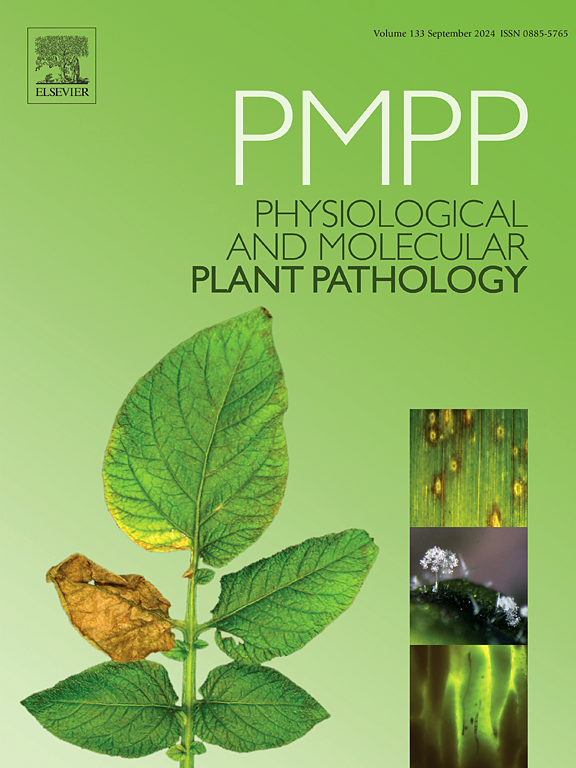Exploitation of Chaetomium globosum and AMF against Macrophomina phaseolina causing root and crown rot in strawberry and its underlying mechanisms by molecular docking
IF 2.8
3区 农林科学
Q2 PLANT SCIENCES
引用次数: 0
Abstract
Strawberry is a widely cultivated fruit known for its sweet flavor and nutritional value faces significant threats from soil-borne pathogens namely Macrophomina phaseolina, leading to low plant stand and fruit yield losses up to 40 %. As an age old practice, farmers use increased levels of fumigants and synthetic fungicides as regular application which caused adverse effects on the soil and plant ecosystem. Thus, this study explores the potential fungal and bacterial biocontrol agents, namely Chaetomium globosum (Cg-6 and Cg-40) and Bacillus subtilis (Bbv-57), as an alternative and eco-friendly management strategy. The root rot pathogen has been isolated from the infected samples of strawberry crop and morphological, molecular characterization has been confirmed as Macrophomina phaseolina (PQ013056). In vitro assays showed that Cg-6, Cg-40, and Bbv-57 inhibited M. phaseolina by 67.77 %, 63.88 %, and 56.66 % respectively. Further, scanning and electron microscopic (SEM) observation demonstrated the lytic actions of Cg-6, Cg-40 and Bbv-57 on root rot pathogen. Further, gas chromatography-mass spectrometry (GC-MS) analysis recorded key antimicrobial and antifungal compounds produced during di-trophic interactions and this was confirmed by molecular docking where high affinity of docosatetraenoic acid, ursodeoxycholic acid, fraxin with two major pathogenesis related proteins chitinase and endoglucanse responsible for disease suppression. To manage, liquid formulations of these biocontrol agents were developed, applied individually (basal + seedling dip + soil drenching) and along with AMF as a basal dose and tested under polyhouse conditions. The combined application of Chaetomium globosum Cg-40 with AMF as basal significantly reduced root rot disease severity up to 76.20 % and also increased the defense enzymes. This suggests that integrating biocontrol agents with mycorrhizal fungi offers a sustainable alternative to chemical fungicides for managing soil borne diseases of strawberry which leads to quality fruit yield.
求助全文
约1分钟内获得全文
求助全文
来源期刊
CiteScore
4.30
自引率
7.40%
发文量
130
审稿时长
38 days
期刊介绍:
Physiological and Molecular Plant Pathology provides an International forum for original research papers, reviews, and commentaries on all aspects of the molecular biology, biochemistry, physiology, histology and cytology, genetics and evolution of plant-microbe interactions.
Papers on all kinds of infective pathogen, including viruses, prokaryotes, fungi, and nematodes, as well as mutualistic organisms such as Rhizobium and mycorrhyzal fungi, are acceptable as long as they have a bearing on the interaction between pathogen and plant.

 求助内容:
求助内容: 应助结果提醒方式:
应助结果提醒方式:


